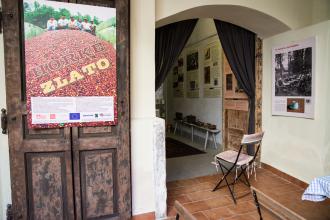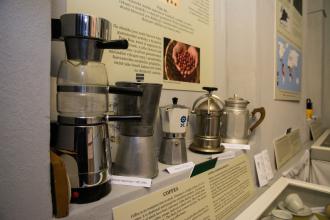How to do it step by step
1st Step:
Developing the idea
In order to present alternative ways of trading, we wanted to have an installation on the topic of fair trade. We contacted different museums like the Museum of Chocolate and Coffee, but in the end we decided to install it at the Museum of Gastronomy in Prague, which was very open to cooperating on the project. This process took us two months.
2nd Step:
Preparation of the installation
The installation was prepared in cooperation with Educon, the Association for Fair Trade in the Czech Republic, and the Museum of Gastronomy. We prepared the texts and the background. The NGO NaZemi gave us authentic photos showing coffee production in fair trade cooperatives. We interviewed people who had visited the local communities that were cooperating with the Czech fair trade organization. The “bitter gold” tool is part of a wider exhibition about coffee. This was also one of the reasons why the museum was eager to host the tool. This process took about two months.
3rd Step:
Implementation
The Museum of Gastronomy prepared the graphic design, and authorized the printing and the final installation on-site. This process took two weeks.






















